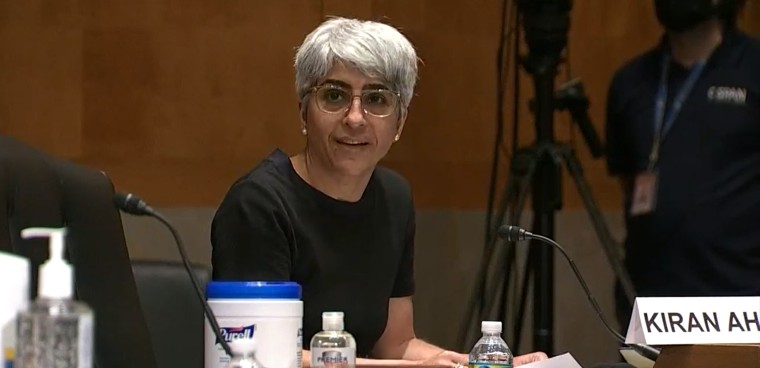OPM updates decade-old telework guide

The Office of Personnel Management is asking agencies to rethink their approach to work in light of lessons learned during the COVID-19 pandemic.

OPM Director Kiran Ahuja at her Senate confirmation hearing in April 2021
The Office of Personnel Management is asking agencies to rethink their approach to work in light of lessons learned during the COVID-19 pandemic. The federal government's human resources shop updated their 2011 guide to on telework and remote work on Friday, with an eye to integrating more telework and remote work into everyday operations.
"The COVID-19 pandemic underscores how vital telework is for any workforce to continue mission-critical services and adapt to a changing labor market," said Office of Personnel Management director Kiran Ahuja in a memo introducing the updated guide.
"As the largest employer in the nation, the federal government has an opportunity to lead by example on this. We are providing a model that will benefit both public and private sector employers to follow, while positioning the government for success now and in the future," Ahuja wrote.
OPM believes that telework and remote work can help agencies recruit and retain workers who view the flexibility as a benefit; broaden the applicant pool to geographic areas not tied to a specific office location; and reduce real estate costs for agencies.
These flexibilities can also help agencies "sustain continuity of operations" during emergencies, the guidance states, and they can be accessible work policies for individuals with disabilities who might have mobility issues that make it difficult to commute to an office, for example.
But even as telework and remote work offer potential benefits, they also present logistical questions like how to manage employees from afar and how pay policies created before remote work was possible will apply to feds living in different time zones than their offices.
The document digs into some of these specifics and offers agencies technical guidance.
As far as feds working from home with children, the new guidance notes that "it is important to remember that telework is not meant to be a substitute for dependent care," stating that teleworking feds are expected to make childcare arrangements as they would if they had to be in an office.
The personnel office offers a range of considerations for agencies' use of remote work, in which employees live outside the geographic area of their worksite and aren't required to have any physical presence in the office. OPM advices agencies to use remote work on a case-by-case basis and establish a clear policy for how such decisions are made. Agencies might want to consider individual work preferences, the job responsibilities in question, or team dynamics, it states.
Agencies "have the discretion to support or deny any request for remote," something that "is not an employee right or entitlement," the guidance says.
Agencies can expect more guidance to come. In a memo to agencies accompanying the guidance, Ahuja wrote that she expects OPM to continue the "examination of telework and remote work policies" over the course of years "as the federal government further defines a broad vision for the 'Future of Work.'"



